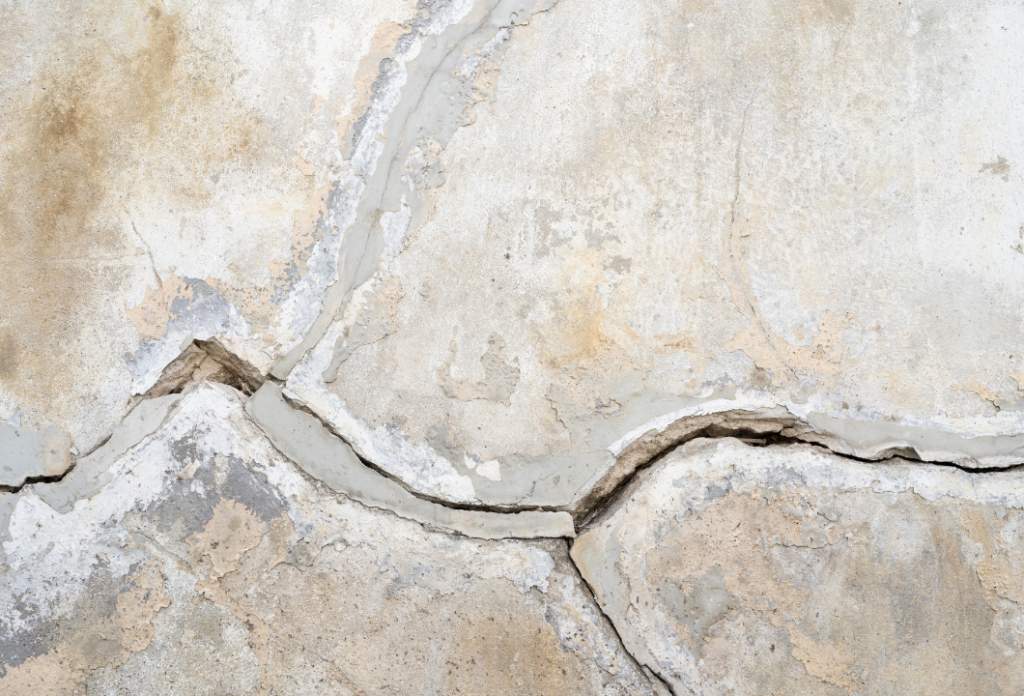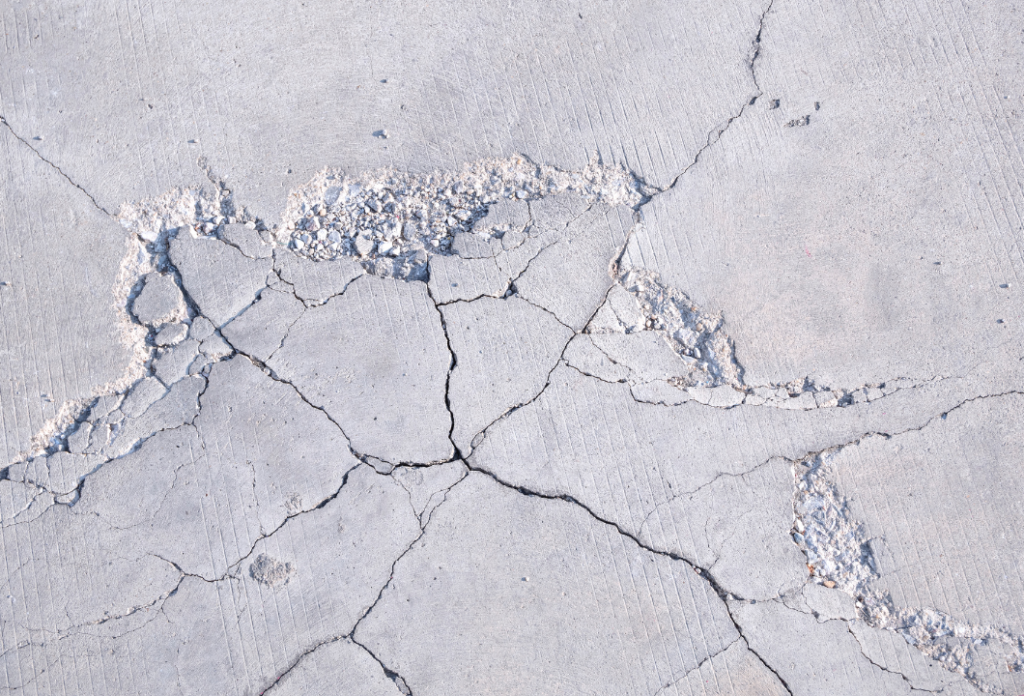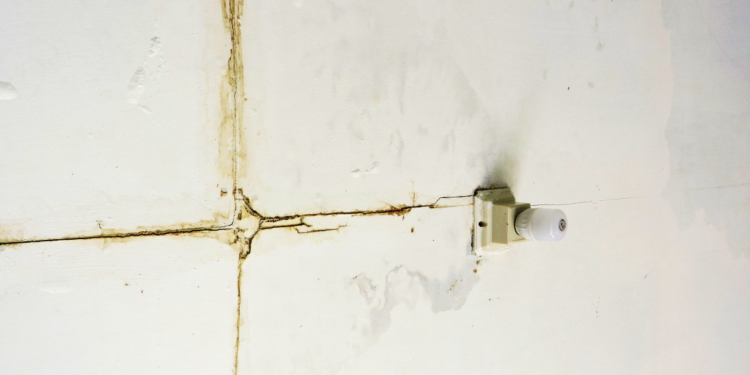Although cracks in ceiling can be really strange, don’t panic just yet! They don’t necessarily indicate that your home is collapsing. It truly depends upon the crack, including its size, location, and type. Cracks frequently occur as a result of your house simply settling, which is quite normal and not a major deal. However, it could be time to hire a professional if you notice new cracks and begin to suspect that your ceiling is covertly conspiring against you. If it’s only the home settling or anything else is happening, they’ll figure it out! I mean, it’s better to be safe than sorry.
Table of Contents
Are cracks in the ceiling serious?
As mentioned earlier, cracks in the ceiling can happen for a couple of reasons: either normal settling or structural damage. Settling is a natural process that all buildings go through over time, so if the cracks are due to this, there’s usually no cause for concern. However, if the cracks in the ceiling are caused by structural damage, it’s important to address them right away. To know what’s going on, you need to be able to spot the signs of structural issues so you can take the right steps to fix them before things get worse.
Also Read about: Renovating with Curved Ceilings in Old Houses
What causes cracks in ceiling ?

Cracks in ceiling are often caused by three main factors: aging buildings, structural damage, and poor construction. When drywall isn’t installed properly, it can also lead to cracks in ceiling. In many cases, you can fix small drywall issues by applying more drywall mud and tape. However, as buildings get older, problems like settling foundations and weakening materials can lead to bigger cracks and more extensive damage. Keeping an eye on your ceiling can help catch issues early, but for serious cracks, it’s best to consult a professional for repairs.
As your home ages, cracks in ceiling drywall can happen naturally due to wear and tear, moisture damage, or heavy objects on the floor above. Sometimes, foundation issues may cause these cracks, signaling structural problems. It’s important to identify the cause early, especially if the cracks get worse.
Moisture damage is one big reason for cracks in ceiling. Water from the roof or an upstairs room can sneak its way down, settling above the ceiling. Also, if you’ve got a lot of heavy stuff in your upper rooms, it can put extra weight on the ceiling below, causing cracks. Sometimes, cracks in ceiling happen because of settling foundations, but this doesn’t always mean there’s a huge problem. Either way, it’s a good idea to check them out sooner rather than later! You don’t want to ignore them and end up with bigger issues later on.
Types Of cracks in ceiling
- Cracks in ceiling can vary in shape, size, and depth, and it’s important to know how to spot the difference between minor issues and serious problems. Here’s a breakdown of the most common ceiling cracks you may come across:
- Small, thin cracks, often called hairline cracks, are common in ceilings, walls, and even floors. These happen as materials shift over time or due to changes in temperature and humidity. Usually, no immediate action is needed, and a fresh coat of paint can cover them up. If old paint layers are the cause, sanding and repainting might help.
- Straight cracks that follow drywall joints often point to poor installation, like incorrect tape or not enough plaster. These are cosmetic issues and can be fixed by a drywall expert.
- Cracks starting in the ceiling and moving down the walls are usually signs of structural issues and should be checked by a professional right away.
- If you notice ceiling cracks with sagging, it’s another red flag that needs a professional’s attention.
- Discolored cracks, like yellow or brown ones, often mean water damage. While they might not be related to structural issues, moisture can cause bigger problems over time, so it’s best to have a plumber or contractor take a look.
- Cracks or gaps between the walls and ceiling usually happen because of a settling foundation or movement in the roof. It’s a good idea to have a professional check things out to make sure everything is stable.
- Spiderweb cracks look like, well, a spiderweb! These are typically small and not serious, often caused by shifting or poor workmanship. But if the cracks are larger, it could indicate a settling foundation or structural problems, so it’s safer to have an expert inspect it.
- Lastly, large or deep cracks in the ceiling can signal major structural damage, and you should call in a professional to assess the situation immediately.
Cracks in ceiling, when to worry?
While severe damage to a building can be alarming, many issues, like cracks in the ceiling, can often be spotted early by attentive residents. If you notice ceiling cracks that extend down the walls, a cluster of small cracks, or cracks accompanied by sagging, it’s a good idea for building owners to call in an inspector. Catching these signs early can help prevent bigger problems down the road.
- Cracks and sagging ceiling: Could indicate a structural issue needing immediate attention.
- Large, continuous crack: If it stretches across the ceiling and down a wall, it’s likely a structural problem. Contact a foundation expert immediately.
- Multiple small cracks: A large number of small cracks could also suggest a serious structural issue. Call a professional.
- Trust your instincts: If you feel something might be wrong, it’s always better to get a professional’s opinion. This guide offers pointers but isn’t a substitute for a foundation inspection.
If you spot big, deep, or long cracks in the ceiling, it’s a pretty good sign that something’s wrong with the structure and needs a pro to check it out. Even small cracks, if they’re all over the place, could be telling you that there’s a problem lurking that’s not so safe. If the cracks in the ceiling are giving you the chills or if you notice other signs of damage, it’s probably
How to fix cracks in ceiling?

When dealing with cracks in ceiling, start by preparing the area. Lay down a tarp, plastic, or drop cloth to catch any falling debris. Removing furniture is a good idea to avoid dust and paint damage.
Next, set up your ladder, making sure it’s stable and that you can comfortably reach the ceiling without standing on the top two steps. Depending on the height, you might need a large A-frame ladder or a smaller step ladder.
If the crack is small, skip ahead to Step 5. For wider cracks or holes, you’ll need to cut out the damaged drywall using a drywall saw. Measure the opening and the space between the ceiling joists. If you have attic access, it’s easier to work from above, but if not, you’ll need to work from below.
To provide support, cut a piece of plywood backer board to fit the hole and sit securely between the joists. Cut replacement drywall to match the hole size and thickness. Then, secure the plywood and replacement drywall with screws.
Clean up any loose material around the crack and apply drywall tape. Cover the tape with a thin layer of joint compound, then sand it smooth once it dries. Finish by priming and painting the ceiling to blend in the patch.
When to Call a Professional?
time to book a professional inspection. Here’s what you should look out for:
- Floors that seem all uneven, sloping, or just saggy
- Doors and windows that seem to be stuck in place
- Cracks in the flooring (it’s never fun)
- Walls that are cracked or even looking like they’re bowing
- Walls that are shifting (like they’re moving on their own!)
- Moldings that are cracked or seem off
- Stair-step cracks in the masonry (those are always fun, right?)
- Walls, ceilings, or floors that just don’t match up anymore
- Porches or chimneys that look like they’re trying to leave
- Water sneaking into the basement
If any of these sound familiar, it’s probably time to get a professional to take a closer look!
Conclusion
Every home, even new ones, settles into the soil over time. This can cause small cracks to appear, sometimes on the ceiling. Don’t worry—these cracks usually aren’t a sign of major problems. However, it’s important to keep an eye out for any that seem concerning. If you notice cracks you’re unsure about, it’s best to call a foundation expert. They’ll inspect the issue and, if there’s any structural damage, let you know what steps need to be taken to fix it. It’s always better to be safe and get a professional opinion.







